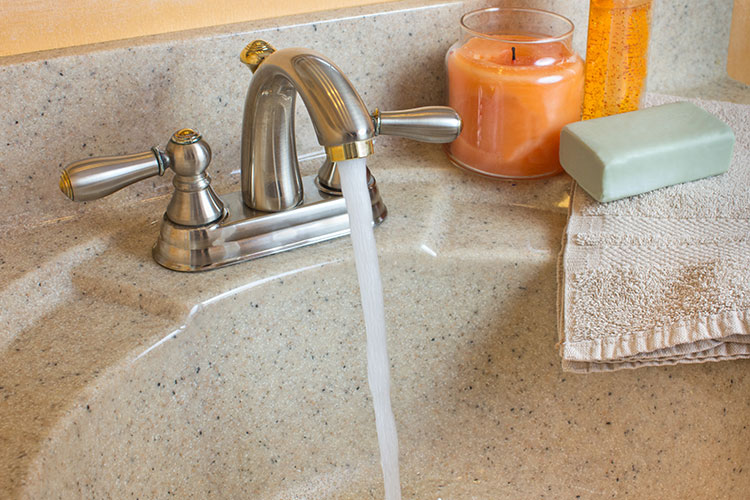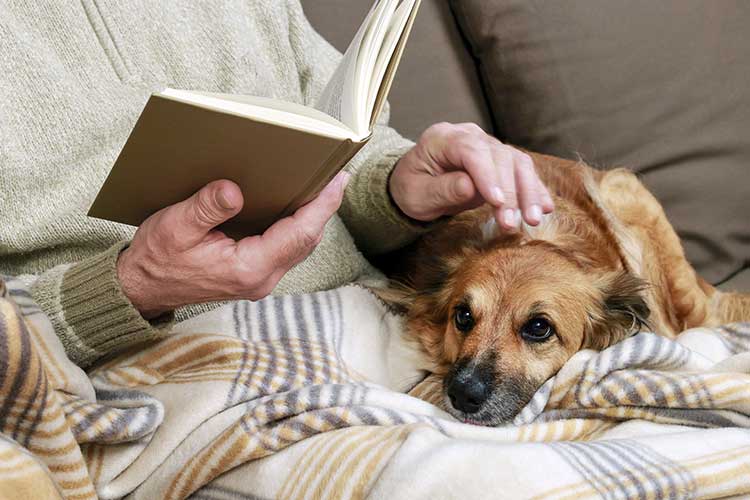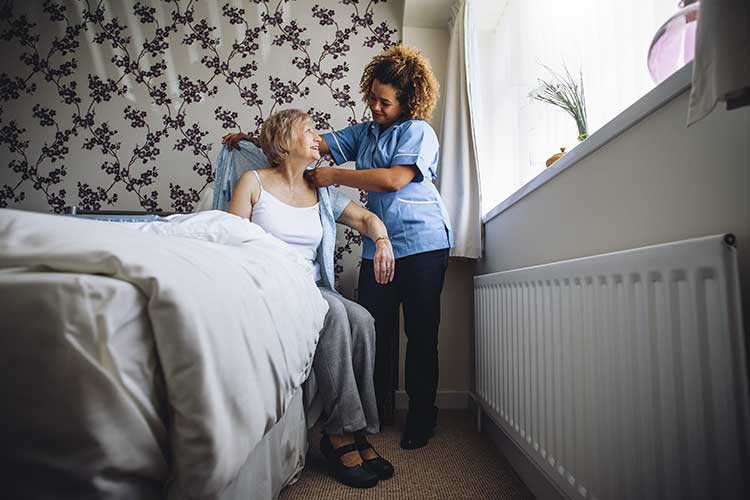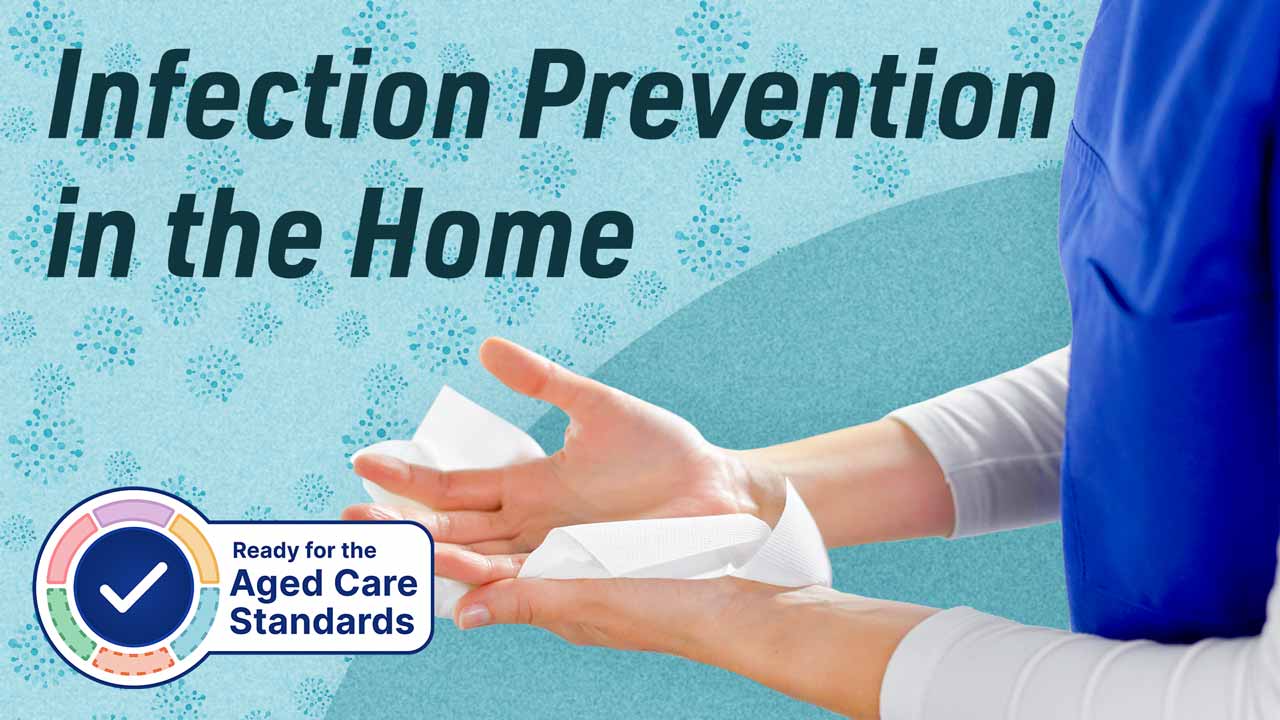Infection control is integral to the safety and quality of any healthcare environment.
While home and community care settings do not necessarily present the same infection risks as acute care, they have their own unique set of challenges that must be considered by staff and organisations (Health.vic 2012).
Protecting yourself and your clients from healthcare-associated infections requires a comprehensive understanding of infection control principles and how to apply them to a home environment.
Environment Cleaning Under the Strengthened Aged Care Quality Standards
Standard 4: The Environment - Outcome 4.2: Infection prevention and control under the strengthened Aged Care Quality Standards (Action 4.2.1) requires aged care providers to establish an infection prevention and control system that is used where an older person’s care and services are delivered - this includes within an older person’s home (ACQSC 2024).
Infection Risks Unique to Home Care
A client’s home may be a ‘workplace’, but it is also a private residence that is not subject to the same regulations as hospitals, aged care facilities and other healthcare environments. The layout and condition of the home, the equipment and the client themselves will vary depending on the location you are visiting.
Inevitably, it is difficult to predict the exact hazards you will encounter. Even if you make appropriate preparations and bring all the equipment you need, you may not know exactly what kind of environment you are working in until you arrive.
There are several unique challenges posed by home care environments:
- Having to apply infection control protocols used in acute care and structured facilities to a home environment
- The client potentially not having certain hygiene resources in their home, even those that are considered basic (e.g. soap)
- Unpredictability (e.g. the client’s friend visiting unexpectedly)
- Having to guide and educate clients (and all those who care for them regularly) about infection control
- Breaches in infection control protocol by the client or their family
- Clients potentially bringing infections home with them after discharge from acute care, which can then be transmitted to staff and passed to other clients.
(Ventyv 2019; Moore 2019)

Basic Principles of Infection Control
Being able to successfully control and prevent infections relies on having a basic understanding of how infectious diseases spread. Ensure you understand:
- Different types of pathogens
- How infections are transmitted (the chain of infection)
- Modes of infection transmission
- How to interrupt the chain of infection.
For more information about infectious agents and the chain of infection, refer to Infectious Diseases: How Do You Break the Chain?
Standard and Transmission-based Precautions
As with any healthcare setting, it is essential to always follow standard precautions when delivering home care services. Standard precautions are the minimum level of infection prevention and control that should be used for all clients, regardless of whether or not they appear unwell. Standard precautions operate under the assumption that every person is potentially infectious (NHMRC 2022).
Standard precautions include:
- Hand hygiene
- Appropriate PPE use
- Safe handling and disposal of sharps
- Environmental controls (e.g. cleaning and spills management)
- Appropriate reprocessing of reusable equipment and instruments
- Respiratory hygiene and cough etiquette
- Aseptic technique
- Appropriate waste and linen handling.
(NHMRC 2022)
Note: See the links above for more in-depth information about each component of standard precautions.
Transmission-based precautions are used in addition to standard precautions when a client is suspected or known to have a certain infectious illness, and standard precautions alone may be insufficient in preventing transmission. The exact strategies implemented will be individually tailored, depending on the infectious agent and its mode of transmission (NHMRC 2022).
Infection Hazards in the Home

Staff and clients may be exposed to biological hazards in the home through contact with contaminated surfaces, ingestion of pathogens or inhalation of infectious aerosol droplets (DMIRS 2019). This can occur during:
- Health and personal care
- Cleaning of blood or body fluids
- Contact with contaminated or soiled items and equipment
- Cleaning
- Laundry
- Handling clinical waste such as sharps
- Food handling and storage
- Contact with pets and their excretions.
(Workplace Health and Safety Queensland 2018)
Minimising the Risk of Infection in the Home
In order to reduce the risk of infection transmission in the home, you should:
- Always follow standard precautions
- Follow transmission-based precautions if a client is suspected or known to have an infectious illness
- Follow facility protocol if accidentally exposed to blood, body substances, sharps or infectious illnesses
- Bring hand hygiene equipment (e.g. alcohol-based hand rub) to homes in case handwashing facilities are not available
- Receive all vaccinations recommended for healthcare workers
- Bring an adequate supply of PPE to homes
- Avoid touching clients’ pets and ensure animal excretion is adequately cleaned
- Keep soiled linen and contaminated objects away from your uniform
- Follow food safety principles
- Maintain good personal hygiene
- Perform hand hygiene:
- When first arriving at the client’s home
- Before and after eating or drinking
- Before handling the client’s food
- After using the bathroom
- After coughing, sneezing or blowing your nose
- After touching contaminated objects or the client’s surroundings
- Before applying gloves
- After removing gloves
- Before you leave the client’s home.
(Workplace Health and Safety Queensland 2018; CEC 2020)

Involving Clients in Infection Prevention
Educating clients about the importance of infection prevention is part of patient-centred care and may encourage clients to uphold infection prevention strategies in their homes. You should:
- Explain the key principles and processes of infection prevention and control (e.g. the importance of hand hygiene)
- Explain any infection risks related to specific treatments the client is receiving
- Encourage clients to disclose any infection risks they become aware of
- Provide clients with opportunities to identify and disclose infection risks (e.g. through feedback procedures)
- Provide educational material about infection prevention and control
- Answer clients’ questions about infection prevention and control.
(NHMRC 2022)
Conclusion
Client homes are less controlled than other healthcare settings and therefore pose unique challenges for infection control and prevention.
In order to protect yourself and your clients from infectious diseases, ensure you have a sound understanding of infection control principles and their role in home environments.
Test Your Knowledge
Question 1 of 3
What precautions should be used for a client who appears healthy?
Topics
Further your knowledge
 Free
Free Free
Free Free
Free
 Free
FreeReferences
- Aged Care Quality and Safety Commission 2024, Standard 4: The Environment, Australian Government, viewed 15 May 2024, https://www.health.gov.au/resources/publications/strengthened-aged-care-quality-standards-august-2025?language=en/environment
- Clinical Excellence Commission 2020, Infection Prevention and Control Practice Handbook, New South Wales Government, viewed 4 September 2023, https://www.cec.health.nsw.gov.au/__data/assets/pdf_file/0010/383239/IPC-Practice-Handbook-2020.PDF
- Department of Mines, Industry Regulation and Safety 2019, Home Based Care Information and Checklist, Government of Western Australia, viewed 1 September 2023, https://www.commerce.wa.gov.au/sites/default/files/atoms/files/home_based_care_2019.pdf
- Health.vic 2012, Hospital in the Home Guidelines, Victoria State Government, viewed 1 September 2023, https://www.health.vic.gov.au/publications/hospital-in-the-home-guidelines
- Moore, R 2019, How Does Infection Risk Differ By Healthcare Setting?, Performance Health, viewed 1 September 2023, https://www.performancehealthacademy.com/how-does-infection-risk-differ-by-healthcare-setting.html
- National Health and Medical Research Council 2022, Australian Guidelines for the Prevention and Control of Infection in Healthcare, Australian Government, viewed 1 September 2023, https://www.safetyandquality.gov.au/publications-and-resources/resource-library/australian-guidelines-prevention-and-control-infection-healthcare
- Ventyv 2019, Home Healthcare Infection Prevention, Ventyv, viewed 1 September 2023, https://www.ventyv.com/blog/home-healthcare-infection-prevention
- Workplace Health and Safety Queensland 2018, A Guide to Working Safely in People’s Homes, Queensland Government, viewed 1 September 2023, https://www.worksafe.qld.gov.au/__data/assets/pdf_file/0018/82503/community-working-safely-in-peoples-homes.pdf
 New
New 
